The Russian auto dealership services market today: key players, major trends, growth drivers and future forecasts
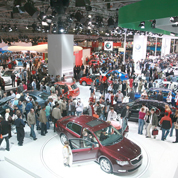
By all indications, it seems that the Russian auto dealership market, unlike most other similar industries across the globe, has successfully managed to stubbornly defy the global financial crisis as it went through the tumultuous economic meltdown almost unscathed with its pre-crisis double-digit growth rate pattern remaining largely intact. This positive trend, according to Russian and international automobile industry experts, has now put Russia in the forefront of the global auto market recovery.
Indeed, the rising importance of the Russian auto market as key sales outlet and favorable investment destination for local and international vehicle makers was underscored at the colorful gathering of ‘who is who’ in the Russian and global auto industries at the Sixth Professional Conference of the Russian Auto Dealers at the Moscow Crocus Expo Center that was organized by the Association of Russian Association of Auto Dealers (ROAD) in August. This was later followed by another high-profile conference, The International Forum Auto Retail Russia, organized by Adam Smith Conferences, which also brought together all leading experts in the global auto and related industries in Moscow in October.
Experts at both conferences brainstormed over a series of issues of relevance to the industry, including post-crisis reformation of the global auto market, perestroika of business modus operandi and overhaul of all the existing functioning principles in both national and global industries. Interestingly, the majority of these experts see Russia as one of the key pacesetting countries in this industry in looming the post-crisis era.
Commenting on the state of the Russian auto market in general, and the auto dealership services segment in particular, Vladimir Popov, the president of Favorit Motors Group of Companies, one of the top-10 players in the industry, referred to today’s industry as ‘a seller’s, rather than a buyer’s market. “This positive trend has made Russia particularly attractive to international automakers defining the ‘face of global auto industry’ today. Indeed, I recently had conversation with one of these experts, Tim Lee, the head of General Motors’ international operations, who ranked Russia second only after China in terms of business perspectives on the global auto market.” (see this expert’s full comment in the Expert’s Corner rubric).
All these trends are generously buttressed by reliable statistical data from both official and private agencies as well as local and international research companies monitoring the prevailing trends in the auto industry. Thus, according to a Review of the Russian New Cars Market in the First Half of 2011, released by Autostat, an analytical agency specializing in the monitoring of key trends on the Russian auto market, and PricewaterhouseCoopers (PwC), the international auditing behemoth, the Russian market demonstrated a robust year-on-year sales growth rate of 57% to 1.16mln units, the highest growth rate in the global industry.
 Vladimir Popov, the president of FAVORIT MOTORS: “I can assure you that most people seeing the name, ‘FAVORIT MOTORS,’ the first time, will always remember it for a long time. It just stays in people's minds.”
Vladimir Popov, the president of FAVORIT MOTORS: “I can assure you that most people seeing the name, ‘FAVORIT MOTORS,’ the first time, will always remember it for a long time. It just stays in people's minds.”
For comparison, India, in the second place, trailed Russia at a far distance with just 16%, followed by the United States in the position with 13% and Germany, on the fourth slot, with a mere 10% growth rate. However, the aggregated growth rate of the Russian auto sales market in monetary terms was much more impressive, as the gross sales turnover grew by a record rate of 85% year-on-year to $27.2bln, Stanley Ruth, a PwC partner in charge of the Russian auto market report, noted. This robust sales data was specifically fueled by the rising number of auto dealers on this market, currently totaling between 3,500 and 4,000 nationwide, the exact figure defying more precise computation due to rampant opacity of operations among dealers, mass bankruptcies among poorly leveraged ones during the crisis, merging and acquisitions of smaller firms by larger ones.
Their arsenals of marketing strategies and sales promotion programs, ranging from traditional approaches to the most innovative sales and post-sales client management tactics, have significantly simplified the process of car acquisitions in the country, and consequently, boosted a significant hike in the volume of auto sales. For instance, official auto dealers have agreements with automakers that facilitate the processes of procurements and deliveries of vehicles to their showrooms, enable them to provide more flexible financing terms to potential car buyers, as well as allow them to offer more diverse car brands, wider ranges of optional equipment and complementary gadgets. Of course, the possession of required qualifications and professionalism by the dealership centers’ CEOs, sales departments and auto mechanics as well as the availability of resources to organize further training and job performance enhancement courses for employees are the sure prerequisites for successful operations in this industry.
Commenting on these and other trends, Renat Tyukteev, a vice president at Nezavisimost Group of Companies in charge of sales of premium auto brands in the company, said the recent crisis sanitized the industry by removing weaker players, leaving behind the strongest and most effective, and hence boosting competition among the crisis survivors. “Consequently, this trend has forced auto dealers to be more clients-friendly in their marketing strategies via improving the quality of their services to attract new potential car buyers and thus impacting positively on the overall development of the market.” (see this expert’s full comment in the Expert’s Corner rubric).
The flying success of these marketing strategies is founded on another unique feat achieved by the Russian market on its exit from the deadly clutch of the global crisis as car production reached an all-time high in the first six months of 2011, a new record in the national car industry’s entire history. Thus, according to the PwC’s Review of the Russian New Cars Market in the First Half of 2011, the volume of gross car production in Russia was 10% higher than the number new cars produced in the country in the third quarter of 2008, seen as the most successful era in terms of car production in the entire pre-crisis period. Thanks to state’s production stimulating programs and private investments into production facilities, Russia was able to hike its car output in 2011. Thus, according to official and independent market analysts’ data, a total of 815,000 cars were produced in the first half of 2011, or 67% higher the volume produced in a similar period in 2010. Experts are forecasting 2011 to be a record year in terms of number of cars produced, as about 1.7mln units are expected to hit the sales outlets by the end of the year.
Of special importance is the fact that all three categories of car segments sold on the Russian market — cars produced by local automakers, locally assembled foreign brands and imported vehicles — displayed remarkable increases in sales in the first half of 2011, compared with the same period in 2010. Broken down, the volume of Russian cars surged by 33.3%, imported foreign cars rose by 60%, while popular foreign car brands assembled in Russia followed the bandwagon trend, rising loftily by a record 77%.
 Renat Tyukteev, the vice president in charge of premium auto brands segments at the Nezavisimost Group: “Our experience and the recent economic crisis of 2008-09 have shown that the most successful growing auto dealers on this market are those that have put their stakes on quality and expansion of services.”
Renat Tyukteev, the vice president in charge of premium auto brands segments at the Nezavisimost Group: “Our experience and the recent economic crisis of 2008-09 have shown that the most successful growing auto dealers on this market are those that have put their stakes on quality and expansion of services.”
The highest demand on the Russian market was observed in the segment of the so-called ‘economy-class’ of foreign cars. Remarkably, PwC researchers have attributed the strong and dynamic growth rate to such positive factors as the state’s auto utilization program, subsidization of auto credits, availability of easily affordable car loans, as well as key macro- and micro-economic changes such as ‘tolerable’ inflation rate, strong appreciation of the ruble against other major global currencies, palpable positive growth in the local economy and substantial decrease in the unemployment rate in the country in the first half of the year.
Also, the ‘significant boost’ in sales was also attributed to the relative lower sales base in the fourth quarter of 2010. Though PwC researchers expect some slowing down of the current sky-high growth rate, they, however, are confident in their projections of at least 2.5mln units of new cars being sold in the country by the end of the year, or about 90% of the pre-crisis sales level in 2008. Broken down, this will represent 820,000 units of imported cars, 620,000 Russian cars and 1.06mln units of foreign car brands assembled in Russia, according to PwC’s forecasts.
A similar sales figure is expected by the Association of European Businesses (AEB) in Russia’s Auto Manufacturers Committee. “The stable sales growth is obvious, though it is gradually losing some steam. This tendency will continue in the second half of the year,” David Thomas, the Committee’s chairman noted. “Thus, according to our recently reviewed prognosis, the number of new cars and commercial vehicles sold in the country will total about 2.45mln units.” It needs be noted here that all these experts’ estimated sales figures still fell short of the auto sales record set in the pre-crisis year of 2008, when 2.81mln units of new cars were sold in Russia, putting it ahead of such countries as the United Kingdom, Italy and France as it trailed only the traditional global auto markets leaders such as the United States, China, Japan and Germany.
Autostat expects the Russian market to hit this historic benchmark again in 2012 and then rise further to a new higher level as both Russian and global economies finally leave behind the daunting vestiges of the crisis years. PwC’s Ruth also supports this point of view, noting that Russia, going forward, will be able to preserve its current global market sales leadership in this industry, not only in 2011, but also in the medium-term perspective. “Based on extrapolations, Russia has the capacity to sell up to 3mln new cars by 2016. Under such growth scenario, the Russian market will be the leader among European countries.”
However, Russian Trade and Industry Minister Viktor Khristenko, announcing in summer the end of the state’s Old Cars Utilization Program, which cost the government 30bln rubles and a record sale of 600,000 ‘new Made in Russia cars’ was even more upbeat, noting that a record 2.7mln units of cars will be sold in the country by the end of the year, a positive trend that will certainly make Russia the largest auto market in Europe in 2014, much earlier than 2016, forecast by the other experts.
Like Khristenko, other industry players project a more ‘rosy’ future for the Russian auto sales market in the longer-term perspective as sales volume is expected to hit the 4mln benchmark by the end of the current decade. “Our long-term forecasts are even more optimistic,” Mark Ovenden, AEB’s Auto Manufacturers Committee vice chairman, noted. “Based on our experts’ estimates, we are expecting the gross car sales volume to reach 4mln by the end of this decade in 2020, a trend that will certainly make Russia the largest auto market in Europe.”
 Andrei Petrenko, the president of the Russian Association of Automobile Dealers: “One of the key problems in our industry is that toady dealership contracts practically do not protect auto dealers’ investments nor adequately regulate the auto producers’ responsibilities to their partners.”
Andrei Petrenko, the president of the Russian Association of Automobile Dealers: “One of the key problems in our industry is that toady dealership contracts practically do not protect auto dealers’ investments nor adequately regulate the auto producers’ responsibilities to their partners.”
Market potential
Though experts are confident about their assessments of the huge potential of this segment of the Russian economy, however, the exact size of the market in monetary terms has continued to defy computation even by the most authoritative experts. As a result, everyone is forced to use indirect data or other statistics derived either empirically or obtained via other methods.
Commenting on the lack of exact data on the real size of this market, ROAD President Andrei Petrenko said, unfortunately, such precise studies are not conducted in the industry, and consequently, all the existing statistics is based estimated sales figures. “Thus, if we know that the average cost of a car today is 700,000 rubles, and about 2.5mln units are expected to be sold in 2011, then we can expect an annual sales turnover o $54bln. And, if we add the cost of post-sales services, traditionally valued at 40% of the sales figure, or additional $21.6bln, then we can fairly estimate of the total market size at $75.6bln.” (see this expert’s full comment in the Expert’s Corner rubric).
The seven-digit number of the expected future cars sales volume cited by different experts, the obvious fact that Russia currently has the smallest index of new cars and the highest number of old cars per capita ownership among the G8 states. For instance, according to ROAD and other experts’ data, there are 400-500 cars per 1,000 residents in most EU states, but this index hovers between 200-250 per 1,000 residents in Russia. If the latter data reflect mainly the situation in Russian largest cities, similar indices in Russia’s smaller cities and regions are much lower than the national average, thus making these regions particularly attractive destinations for auto dealership business operations. These data, coupled with the citizens’ rapidly increasing real disposable incomes, etc., are clear positive indications about the size, potential and attractiveness of the Russian auto market to both local and foreign automakers, and by extrapolation, to auto dealers in the country.
For instance, according to Autostat, the national average age of cars in Russian currently stands at 12 years. Like all statistical data, the Russian national average figure masks the real stark situation with dilapidated vehicles in the country, because, based on Autostat’s breakdown of its data, every second car or almost 51% of all vehicles in Russia is over 10 years old, while another 26% of all the vehicles are between one and five years old. These figures fully rhyme with the official statistics complied by the Russian Trade and Industry Ministry, which has put the number of cars, trucks and buses aged above 10 years at 48%, 62% and 45%, respectively.
For comparison, the national average age of cars in most other European states is less than 3.5 years, while the share of 10- and above-year old cars is less than 32.4%. Commenting on these data, Alexei Rakhmanov, the director of auto industry and agro machinery department at the Russian Trade and Industry Ministry, noted that the comparatively higher average age of cars on Russian roads has continued to remain one of the most acute problems in the country. “The issue of substituting these antiquated cars with new models is a cornerstone of all future projects aimed at developing the Russian auto industry.”
“The positive trends on the Russian auto retail market, according to authoritative local international car industry experts, have now put the country in the forefront of today’s global auto market recovery.”
These statistical data, though highlighting the starkly poor state of the Russian auto industry, they also, however, underscore the depth of both the latent and active demand among Russians for modern cars, as a majority of the nation’s financially solvent citizens is in constant quests for new or fairly used cars at affordable rates. Major global automakers have also noted this reality, a fact evident in the rising number of international auto companies in the country today. Their ‘market conquering strategies’ are different, varying from exportation of their products to Russia, opening sales outlets, service networks to assemblage and/or full localization of car production plants in the country. However, irrespective of the tactics used, automakers will always need the services of official and professional car dealers to effectively bring their products to end consumers.
For instance, in September 2011, The AAA Auto Group, a Czech group of companies, and one of Europe’s largest retailers on the ‘second-hand’ cars market, opened its first dealership center in Sherbinka in the Moscow Region. According to Roman Schubert, business development manager of AAA Auto Group, the company’s board has come to “the conclusion that it is economically attractive to do business in Russia and, therefore, adopted a plan to enter the market.” And, talking about the company’s development strategy for Russia, Carolina Topalov, the AAA Auto executive director, noted that the company will initially plan to sell between 200 and 300 cars and then gradually push this figure to 1,000 units per year. “For the time being, we shall develop our Russian business independently.”
Another attractive niche on this market is after-sales and other complementary services. Indeed, today, unlike in the Soviet times, when almost all Soviet males with cars had to turn into self-trained auto mechanics or secure the services of the so-called “garage auto specialists” to keep their Volgas, Ladas, etc. on the roads, most auto dealers today offer clients the latest, state-of-the-art post-sales services covering all aspects of auto maintenance and repair works.
Though market experts and expatriates say the Russian auto dealership centers are still ‘light years’ away from the almost ‘ideal situation’ in most western countries, where auto dealers generate profits mainly from post-sales services, they are also equally far away from the situation that once existed in the industry 20 years ago. Today, according to experts, the ratio of sales to services in dealership operations in Russia is currently lopsidedly in favor of the former, at 70% to 30%, a trend that will likely be changed by the Federal Law on Vehicle Technical Examination Procedures Reform that envisages transferring this function from the Traffic Police’s jurisdiction to insurance companies and auto dealership centers
Cost of car ownership
Today, potential car owners in Russia have many options and financial instruments to help them acquire their dream cars. These options range from traditional cash payments to banking services such as simple car loans, auto mortgage credits or other types of complicated financial instruments and special government programs aimed at stimulating auto sales, and special marketing programs such as the so-called ‘trade-in mechanisms, etc. According to ROAD’s data, trade-in schemes currently account for about 20-50% of different car models sold. The potential buyers are only expected to seriously study the available auto sales options and match them with their dream cars and their financial capabilities in order to avoid falling into debt pits.
“The current crisis has forced auto dealers to be more clients-friendly in their marketing strategies via improving the quality of their services in order to attract potential car buyers to their show rooms.”
All these options are widely used today on the Russian market, according to experts. Thus, according to Autostat, about 36% of all the cars sold in Russia in 2010 were procured via banking auto loans, while today, the figure has risen to 50% as every second car is being sold in via bank loans. Similar data were also contained in the PwC’s report: In 2008, the share of cars bought via banks’ auto loans stood at 50%, but this figure nosedived to almost zero in 2009 as banking credits became a rarity at the peak of the economic meltdown, and then rose steadily to 36% at the end of 2010.
This option is full of gaping pitfalls such as excessive interest rates, mandatory complementary services such as obtaining full CASCO insurance coverage for purchased cars, and health insurance and job loss insurance by car owners, and hence, higher costs of car ownership. However, it is a popular default option among potential buyers as it enables them to become ‘real car owners instantly’ on the day of securing the credits, rather than waiting for several years to accumulate money for their dream cars.
For those unable to afford brand new cars of their choices, there is the second-hand or used cars market to quench their tastes for car ownership. The volume of dealership operations on this market is increasing by 100% per year, while the market itself is increasing at annual average growth rate of 20%, according to data released by Autostat at a conference dedicated to the Russian second hand cars market in May 2011. “The most interesting segment on this market is the category of foreign cars aged less than 10 years. This segment accounts for 33.7% or 1.38mln units of cars sold,” Autostat CEO Sergei Tselikov said. “The second hand market, apart from concrete buyers, is also interesting to auto dealers, banks, insurance firms, etc. as this market is currently searching for a growth model. There are European, U.S. and other growth and development models, but which one Russia will follow to a civilized secondary auto market is currently unclear.”
Today, official dealership centers account for just 4% of the national market sales of used cars, but in Moscow and St. Petersburg, the figure is significantly higher – at about 20-25% – of their cities’ sales, a reality that highlights the rising competition among dealers in larger cities, according to Andrei Izmalkov, the director of BlueFish’s Analytical Department. The rest market share comes from car sales by individual owners. By the end of 2011, auto industry analysts expect the number of used cars to hit 4.4mln units, while sales volumes in monetary terms to reach $51.9bln. Izmalkov expects the market share of the official dealership centers to increase to 30% by 2015.
Experts, basing their extrapolations on the current economic conditions, say the key players on the Russian auto market can expect long-term growth, but at the same time should be ready to be able to quickly respond to all the possible changes in the marketplace. All things being equal, the winners, and hence, future pacesetters in the industry, will be the dealership centers that are able to put in place an uninterrupted vehicle supply system, offer ranges car models desired by potential clients, avoid overstocking their warehouses with unneeded or poorly demanded vehicles, etc. All these features will enable these pacesetters to turn this fast rising competition into their favor as they will be much better placed to offer more attractive sales terms such as significant discounts, special prizes, etc., to potential vehicle buyers, and consequently, conquer a larger share of this market.
This text was copy-proofed by Narine Adamova.



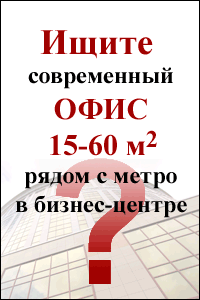
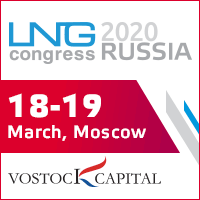


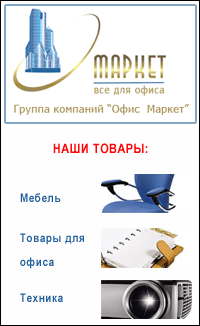



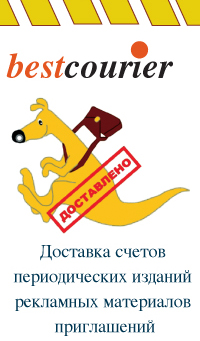
 Web design,
Web design,